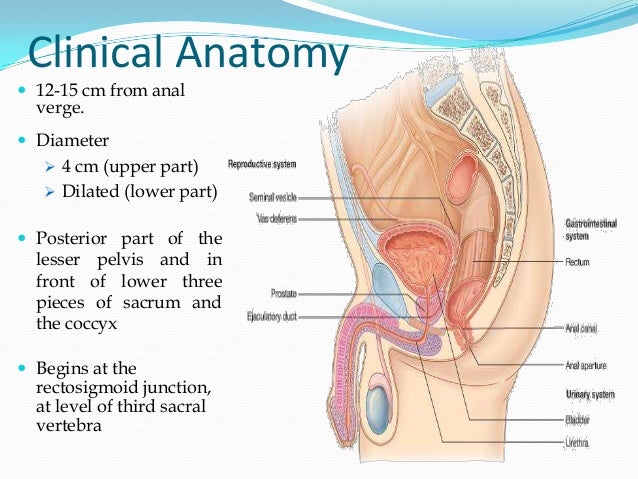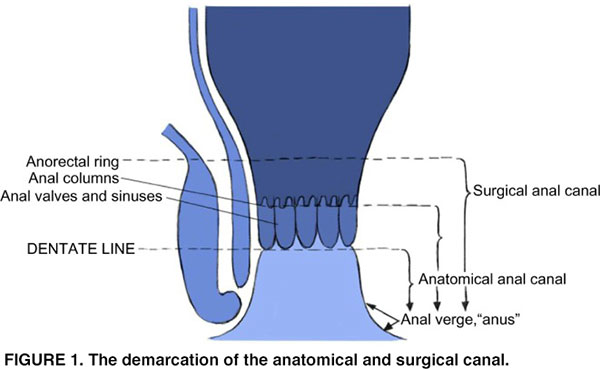Dissolve internal or external hemorrhoids and the scar tissue that leads to rectal strictures or anal stenosis using DMSO
This management guide covers the risk factors, symptoms, diagnosis, staging, and treatment of colorectal and anal cancers. 1

Rectal prolapse is a “falling down” of the rectum so that it is visible externally. The appearance is of a reddened, proboscis-like object through the anal sphincters.

The rectum is a part of the lower gastrointestinal tract.The rectum is a continuation of the sigmoid colon, and connects to the anus.The rectum follows the shape of the sacrum and ends in an expanded section called the rectal ampulla, where feces are stored before their release via the anal canal.

Dec 15, 2017 · An anal fissure (see the images below) is a painful linear tear or crack in the distal anal canal, which, in the short term, usually involves only the epithelium and, in the long term, involves the full thickness of the anal mucosa.{file36258}{file36259}For patient education resources, see the Digestive Disorders Center, as well as Anal …



To collect an anal-rectal sample, a tap water-moistened Dacron swab is used. The Dacron swab is inserted about 5-6 cm into the anal canal past the anal verge, into the rectal vault. This is done without direct visualization of the anal canal. Firm lateral pressure is applied to the swab handle as it
UCERIS rectal foam is a glucocorticosteroid, formulated with budesonide, that’s uniformly delivered to the distal colon, where it extends up to 40 cm from the anal verge to help patients with active, mild to moderate distal UC achieve remission. 1,2

top. Causes of Anal Fissure Either extreme constipation or diarrhea, usually combined with nervous tension over a prolonged period of time, may produce anal abrasions, simple slit-like fissures, or acute ulcers at the anal verge.
Jul 26, 2017 · Hemorrhoids result from disruption of the anchoring of the anal cushions. They occur most commonly in the right anterior position and are associated with straining and irregular bowel habits. During defecation, straining engorges the cushions, resulting in their displacement. Repetition of this
Rectal procidentia, also called rectal prolapse, is a pelvic floor disorder that typically occurs in older adult women but can occur in men and women of all age



